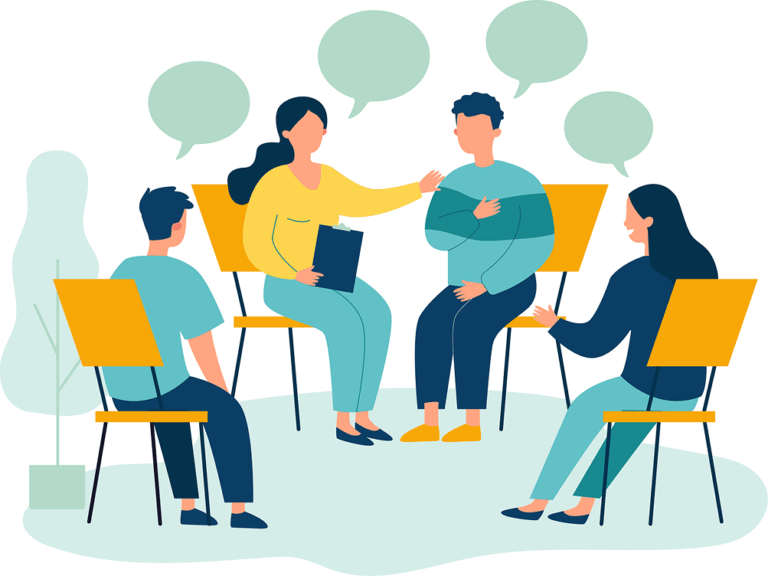Alcohol Abuse Among Native Americans, Alaskan Natives, and Pacific Islanders
Rates of alcohol abuse and alcoholism among Native Americans, Alaskan Natives, and Pacific Islanders tend to vary by location, culture, and socioeconomic factors.
Alcoholism And Native Americans, Alaskan Natives, And Pacific Islanders
Despite stereotypes of excessive drinking, there have been relatively few studies on the rates of alcohol consumption and alcoholism among Native Americans, Alaskan Natives, and Pacific Islanders. In reality, the drinking habits of these groups are often similar to those of European, African, Latino, and Asian Americans. A national Behavioral Risk Factor survey from 2011 to 2013 found that European and Native Americans shared a binge drinking rate (17%). Among adults who reported drinking in the month prior to the survey, rates for Native Americans were lower than the European American population and similar to African and Latino Americans.
While men in the Indigenous community who drink excessively outpace other ethnicities, certain groups of Native peoples abstain from alcohol in far greater numbers than their non-Native counterparts. For example, 60% of Native Americans reported abstaining from alcohol in the month before one survey. Subsequently, the relationship between alcohol use, abuse, and addiction in the native community is complex and affected by a multitude of social factors.
The nearly 2 million American Indians and Alaska Natives living in the United States fall into approximately 300 different tribal or language groups. Thus, although some generalities can be drawn with respect to alcohol use and its related consequences in this population, the variability among tribes and communities should not be disregarded.
National Institute on Alcohol Abuse American
Understanding the causal link between alcohol use and the negative consequences of heavy drinking (such as alcoholism) in the Indigenous community requires an understanding of the many social, economic, and public health factors their communities uniquely face. For instance, many Indigenous people live in rural or remote areas with limited access to emergency and medical services. As such, individuals suffering from things like alcohol poisoning or alcohol-related liver cirrhosis will need to either wait longer for an ambulance or travel farther than urban dwellers to receive care. These disparities often contribute to an overall poor public health.
Dispelling The Myth Of Pervasive Indigenous Alcohol Abuse
The stereotype that Native Americans drink far more than other groups of Americans is yet another example of damaging prejudice with lasting, real world consequences. Social epidemiologists have indicated that it can affect everything from “job prospects to the kind of diagnosis a doctor gives.” In addition to the scarcity of research on alcohol abuse among Native Americans, most studies have highlighted only the drinking patterns of people living on reservations or tribal lands and have thus neglected two-thirds of the Native population in the U.S.
The overall prevalence of drinking among Indians is not the most important variable in the epidemiology of drinking. What is more important are the drinking styles, some of which emphasize very problematic behaviors.
The Epidemiology of Alcohol Abuse among American Indians: The Mythical and Real Properties
Stereotypes that European Americans were better able to “hold their liquor” or avoid alcoholism despite heavy drinking in comparison to Native Americans are also patently false. Often, these types of stories lay mistakenly in the belief that Europeans wholly introduced alcohol to the Americas. Many tribes across the Americas fermented fruits and plants before being introduced to stronger fermented drinks by English and Spanish colonialists. Moreover, multiple Native cultures had long histories of using mind-altering substances (such as peyote and ayahuasca) in certain rituals.
Nonetheless, troubling statistics surrounding the abuse of alcohol among Indigenous populations do exist – just as worrying concerns exist for other groups within other ethnicities. According to the National Institute of Health, Native American youth have the highest drinking rates among any ethnicity and were more likely to practice excessive drinking regardless of geographic location.
12.1
percent
Native Americans have the highest rate of heavy drinking (5 or more drinks in one sitting on at least 5 of the last 30 days) at 12.1% of the population.
16.43
percent
In 2006, 16.43% of Native Americans reported first using alcohol before the age of 15, compared to an average of 6.63% among other groups.
13.3
percent
In 2007, 13.% of Native Americans (and 15.6% of European Americans) reported getting a DUI in the past year.
Native Americans And Alcohol Use
Alcohol use data among Native Americans is typically collected from everyone who identifies as Native American in any given survey. Yet, the Native American group consists of a wide variety of peoples spanning the entire country. In one survey of Native Americans by tribal location, researchers found that Southwest Indians had lower drinking rates than Northern Plains Indians and the U.S. national average. Among Southwest Indians between the ages of 15 and 54, between 41.8% and 66.6% of men reported drinking at least once in the past year; between 11.5% and 53% of women reported drinking in the previous year.

Need Addiction Support?
Reach out to a treatment provider today! Calls are always free and confidential.
Alaskan Natives And Alcohol Use
Drinking habits among Alaskan Natives vary widely depending on the age group. Alaskan Natives in grades 9 through 12 have lower drinking rates than other students their age in the state and the national average. However, young adults have excessive drinking rates more similar to the state average (Alaska has one of the highest heavy drinking rates in the country). Conversely, elders in the Alaskan Native community exhibit low rates of alcohol use and high rates of lifelong sobriety. More than 30% reported never having a drink, followed by 26.5% who reported their last drink occurring at least three years ago. This is a far departure from the national average for adults between 59 and 64 years-old. of which, 56% reported drinking in the past month.
Pacific Islanders And Alcohol Use
Asian Americans (a population that generally includes Pacific Islanders) are one of the fastest growing demographics in America. Yet, as their numbers in the U.S. have increased, so have alcohol consumption rates for some nationalities. In one study, researchers found that among Asian American Pacific Islanders who drank, they consumed more alcohol than any other ethnic group. Another survey showed that 50% of Pacific Islanders reported drinking in the past six months, compared to 13.2% for Filipinos and 5.8% among Chinese Americans.
Aldehyde dehydrogenase-2 (more commonly known as ALDH2) is an enzyme central to metabolizing alcohol. Millions of people of East Asian descent are genetically predisposed to ALDH2 “inactivity” and display “flushing” symptoms when drinking, including a pronounced headache, nausea, flushed skin, and discomfort.
Paid Advertising. We receive advertising fees from purchases through the BetterHelp links below.
Online Counseling for Alcohol Addiction
Online therapy can help you with long term addiction support. Start your therapy journey with BetterHelp.
- Personalized Matching Process
- Easy Online Scheduling
- 20,000+ Licensed Therapists
- Personalized Matching Process
- Easy Online Scheduling
- 20,000+ Licensed Therapists
Substance Abuse Treatment For Indigenous Peoples
Heavy drinking is linked to a number of health risks – from alcohol-related injury (like cirrhosis) to depression. In a statewide survey, Alaska found that 4.1% of its Native population were alcohol abusers and up to 14.9% may be dependent. Also, young Alaskan Native males were 14 to 40 times more likely to commit suicide.
Additionally, people living in rural areas (regardless of ethnicity) experience a distinct lack of access to health care and substance abuse treatment programs. Those Native Americans, Alaskan Natives, and Pacific Islanders who do suffer from an alcohol use disorder (AUD) are often unable to get the treatment they need due to location, availability of services, and cost. Moreover, the negative consequences of alcohol abuse can have a greater impact on smaller communities, where one injury or death can affect a significant portion of the community.
Many health professionals believe effective addiction treatment for Indigenous people needs to include a cultural component for true healing.
Various community-based recovery programs for Native Americans maintain a “strong cultural or spiritual component that is intended to revitalize traditional beliefs and serve as the primary source of individual strength in maintaining sobriety.” Yet, these programs can be difficult to locate for people living in rural areas or for those without transportation to a nearby rehab center.
Find Detox Services And Rehab Today
Treating an AUD early can lower the risk for future negative outcomes. If you’re looking for more information about alcohol related rehab, contact a treatment provider today.

